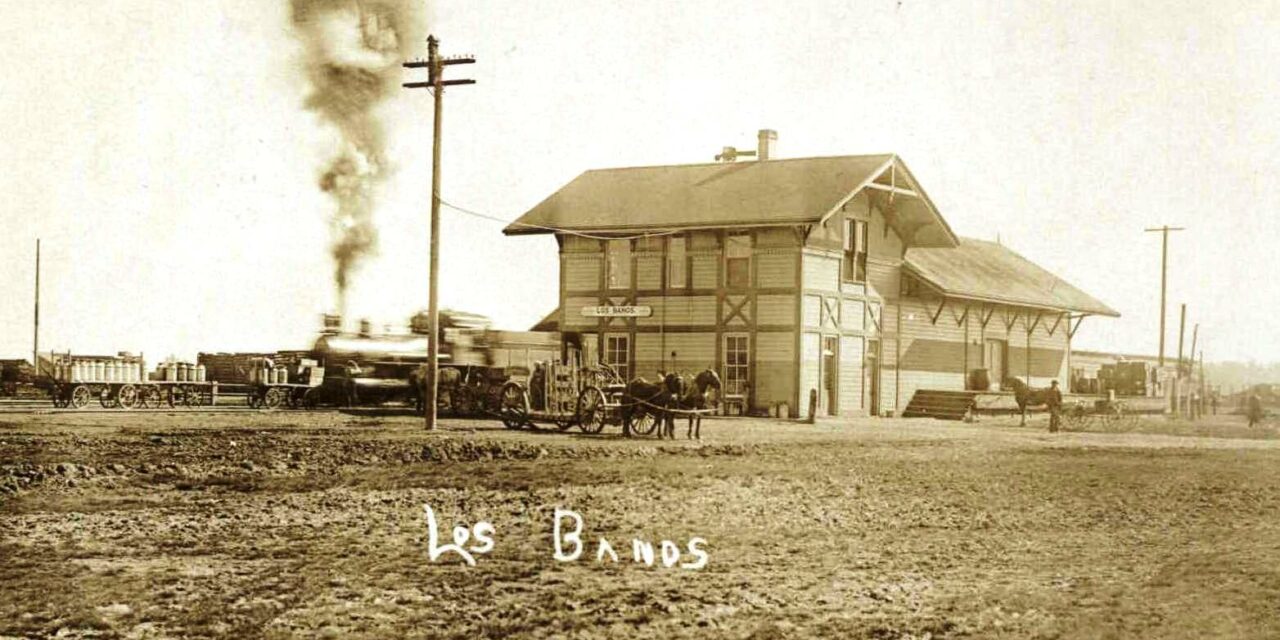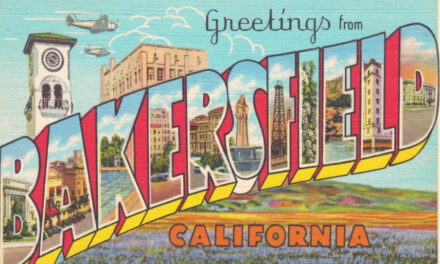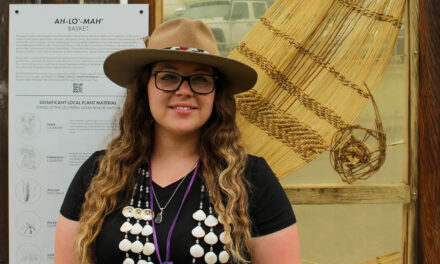When considering the history of Los Banos and the Greater Westside of the San Joaquin Valley, the most significant event was the completion of the railroad through this region in 1889 by the Southern Pacific Railroad Company. It’s hard to overstate the impact of the railroad to the transformation and the development of this region. This event is so significant that distinguishing historical eras around “pre- and post-railroad” makes sense.
Pre-railroad eras in this region would include the Native American era, Spanish Mission era, Mexican California era and the arrival of other European pioneers. In the pre-railroad era pioneers formed communities around stage stops and the San Joaquin River, the transportation means of the time. Once the railroad was built local stage-stop communities such as “Old Los Banos” (located six miles west of today’s Los Banos) and Central Point (located where Ortigalita Road and Highway 152 intersect) were uprooted and moved next to the railroad. The once-thriving San Joaquin River towns such as Hills Ferry and Dover which once served the supply-laden steamships were moved to communities being formed along the railroad.
It’s not by coincidence that all the towns in our region of the Valley are railroad towns. From Patterson to the north, Newman, Gustine, Los Banos, Dos Palos, Firebaugh, and Mendota to the south. Every community in the Greater Westside sprang up along the railroad. Although the stage routes and the San Joaquin River filled the niche for transportation in the early pioneer days, the railroad provided easier, quicker, and more reliable service. Timely shipping for agricultural perishables opened up the dairy industry and markets for other agricultural commodities, as well as providing mobility and easy access to other regions of the state. Many of us old-timers have fond memories of the train whistle as it made its way through town and access to the outside world through the “The Owl.”
The settling of Los Banos on the railroad is an interesting and colorful story. Henry Miller was the force behind the location and development of the new Los Banos. Initially Miller advocated that the ideal setting for the new town was where the railroad crossed Los Banos Creek in the Badger Flat area. He failed to convince the owners of this land, the pioneer Woods family, to go along with his plan so he settled on developing his own land instead. He strategically chose the location in the proximity of his Canal Farm Ranch (where Espanas Restaurant is today) on the railroad line. He moved the salvageable buildings, including the federal post office, from Old Los Banos & Central Point to their new location. The community of Volta was also formed on the railroad and attempted to become the hub of the westside, however they ultimately couldn’t compete with Henry Miller. Miller immediately divided the land into parcels forming the new town and initiated construction of some foundational buildings such as a general store, the three-story “Los Banos Hotel,” and opera house, and the Bank of Los Banos, all situated in the hub of the downtown intersection of Sixth and I Streets.
The new town of Los Banos was born as a direct result of the coming of the railroad. The railroad ceased operations in the late 1960s but not before transforming the Valley forever.
For additional information on the history of Los Banos and the Greater Westside, visit the Milliken Museum. We are open from 1 to 4 p.m. every day, except Mondays.




